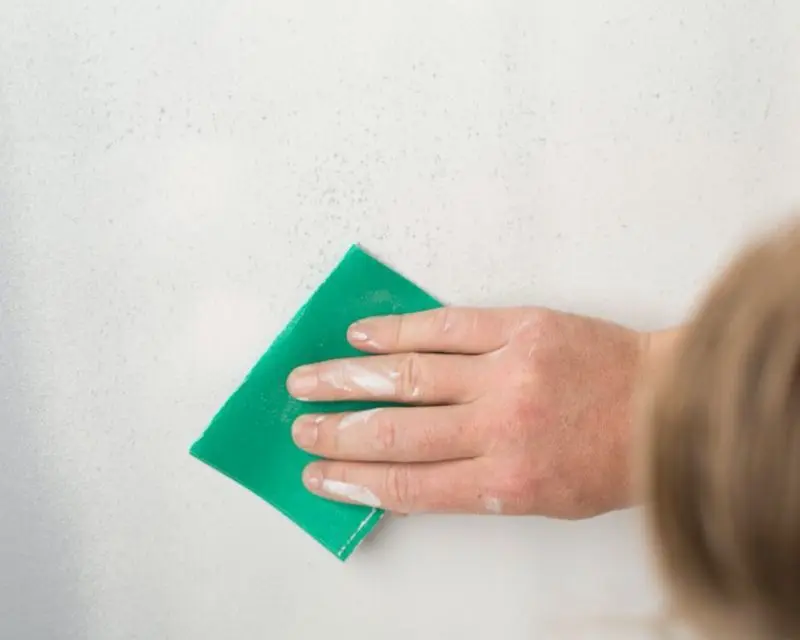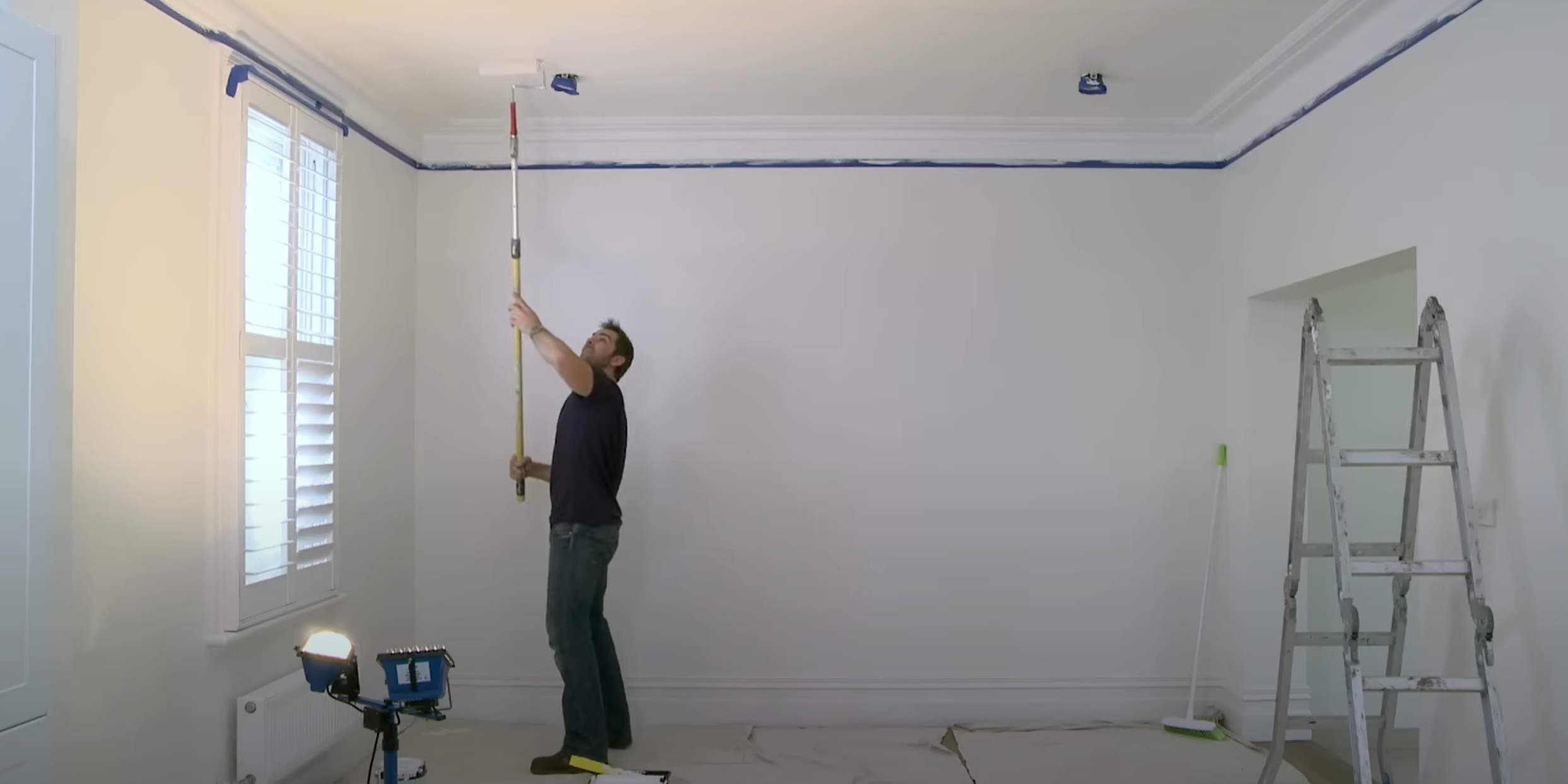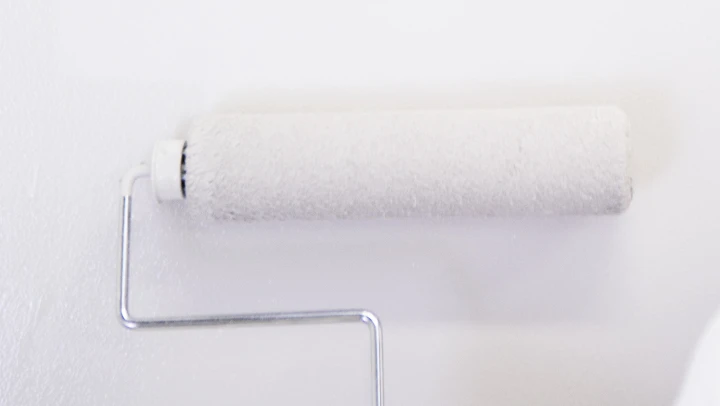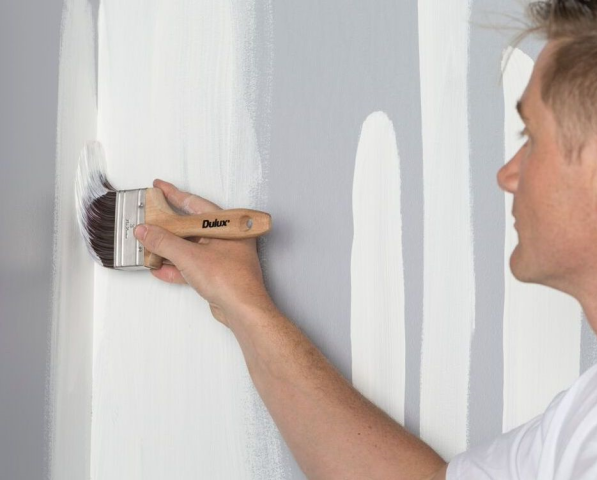
How to paint your ceilings
Your ceilings can sometimes be overlooked, but with a refreshing colour and a flawless finish you’ll give people a reason to look up and admire your handy work. Discover how to paint your ceiling so it’s perfectly smooth.
Follow 4 easy steps to get you started.
How To Guides
Follow these 4 easy steps
Step-by-step

Preparation
All good projects begin with good preparation. So clear your area, lay down a drop sheet, then grab yourself a ladder, brush, tape, roller and extension pole and tray. Begin by cleaning your ceiling. Remove cobwebs with a clean broom and wash the area with Selleys Original Sugar Soap. It’s true, no one enjoys cleaning but missing this step could lead to trouble later on. Tape around cornices, edges and any down lights.

Cut in
Cut in around the wall edges with a brush - these are the areas a roller cannot easily reach. Maintain a wet-edge by cutting in larger areas in sections as you go. This will help to avoid ‘picture framing’ where unblended cut in areas remain obvious after rolling.

Use a roller
Once you’ve loaded your roller evenly, begin in one corner and move fluidly in a parallel motion. For best results, work in 1 metre sections painting across and then down. Roll as far into the previously brushed sections as possible.
Tip:
When a roller sleeve is used, then washed, it can start to lose some of its fibre and the ability to hold the right amount of paint. Make sure your roller is in good condition to deliver optimum smoothness.

Laying off
Now that you’ve finished a large section of your ceiling, and while it’s still damp, you can begin laying off the paint. This is a crucial step in achieving a smooth and consistent finish. Using an unloaded roller begin in the top left corner of your ceiling and gently pull towards you in a straight line with no pressure. A lightness of touch will prevent new brush strokes from forming. Repeat this action, only this time, slightly overlap your last movement so your roller rubs away the line created by the previous stroke.
Learn how to paint ceilings
Here's what you need to get started:
Products
Tools and Accessories
Medium nap synthetic roller (10-18mm)
Paint pot
Roller tray
Extension pole
Painter's tape
Remember:
The nap length of a roller refers to the thickness of the roller cover. Less than 10mm nap length won’t deliver enough paint, and can make it look uneven. Most ceilings need a 10-18mm nap sleeve.
Ceiling paint application FAQs
Dulux Ceiling White is perfect for living rooms, bedrooms and hallways. It has a mould-resistant formula with a five-year guarantee against mould, and is low odour and low VOC.
Dulux Ceiling White +PLUS Kitchen&Bathroom is suitable for the whole home, particularly damp areas such as bathrooms, kitchens and laundries. It needs just one coat over previously painted light colours. It has a mould-resistant formula with a ten-year guarantee against mould.
Both Dulux Ceiling White and Dulux Ceiling White +PLUS Kitchen&Bathroom are available in 1L, 2L, 4L, 10L and 15L cans.
Both Dulux Ceiling White and Dulux Ceiling White +PLUS Kitchen&Bathroom come in a white base which is tintable to other colours. Our most popular colours are Vivid White and Lexicon Quarter.
Patchiness on ceilings means paint can look blotchy or inconsistent. A patchy ceiling can cause a space to look unfinished or messy. It can also include streaks made by the paint roller, brush marks or stipple from an uneven roller.
Learn how to avoid patchy ceilings.
Usually a patchy ceiling needs totally repainting. Re-painting a small area can often make the patchiness more visible. Learn how to avoid patchy ceilings.
Patchiness in dry ceiling paint is often due to not having a ‘wet edge’ as you paint. This means keeping the edge of the painted area wet so the paint blends smoothly when you roll the main surface. Check out more tips on how to avoid patchy ceilings.
Interior how to guides
Nothing beats a great paint job, especially one you’ve done yourself. Give yourself the best chance at success by following these instructions.
The walls of your home colour your world. They are what set the mood for everyday life. So, the way you apply your paint can be just as important as the colour itself.
Brush up your painting skills with these simple tips and tricks from Dulux.
To use a roller you'll need a tray, frame, roller cover and possibly an extension pole. Make sure you have the right roller for the job.
New and improved
Dulux Wash&Wear®
For a superior washable finish, check out the all new Wash&Wear® Low Sheen, with its stain resistance and mould & mildew resistant technology which makes it ideal for all interior walls including high traffic areas.
Explore over 1,000 colours from the popular Dulux Colours of New Zealand range.
Book now to have an online or in-home colour consultation with a qualified interior designer.
Available 6 days a week, start a chat with our team to discuss everything you need to gain colour confidence.






